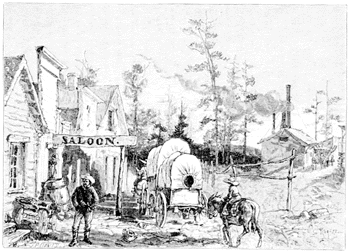Leadville: Dust Disease and Destiny

Along a part of the length of two streets (six inches deep in horrible dust, which one of the local papers declares will breed disease) are seen rows of the typical far Western buildings, some large, some few of brick, one or two of stone, very many small, very many of wood. Outside of these are mines and smelting-works, smelting-works and mines, stumps and log-cabins, log-cabins and stumps, ad infinitum.
This image, titled "Suburban Scene, Leadville," is on page 103; quotation is excerpted from page 101.
A.A. Hayes, Jr., New Colorado and the Santa Fe Trail (New York: Harper & Brothers, 1880).
William Borden made his fortune as a result of part ownership of a silver mine in Leadville, Colorado. According to Borden's reminiscences, "my brother said, 'if you can distinguishe between granite and limestone, we want you with us.' Well, I thought I could do that, so I went out" (p. 29).
The venture was a family affair.
My nephew was already located in Leadville as the expert assayist for Leiter of Chicago. He had secured an interest in a mine by grub staking the prospector, George Fryor, and asked my brother, John, to take an interest in some abandoned claims which Fryor, [a man called] "Chicken Bill" and my nephew had attempted to develop (pp. 28-29).
During the two years he was in Leadville, Borden became partners with his brother John, and H.A.W. Tabor, a prominent citizen of Leadville. Marshall Field of Chicago provided money for the operation. The New Albany Courier-Journal reported on March 7, 1879, when Borden was visiting New Albany, that "The firm of Borden, Tabor and Co. owns mining property worth over five million dollars at the present writing, which is constantly increasing in value."
In approximately 1880, after returning to New Providence, Borden wrote a book to answer the questions that people asked him about Leadville. Some excerpts from that publication are on the next page.
